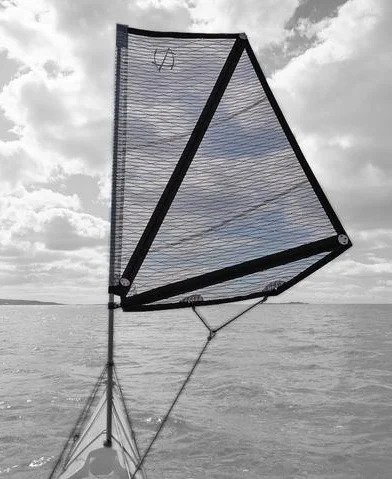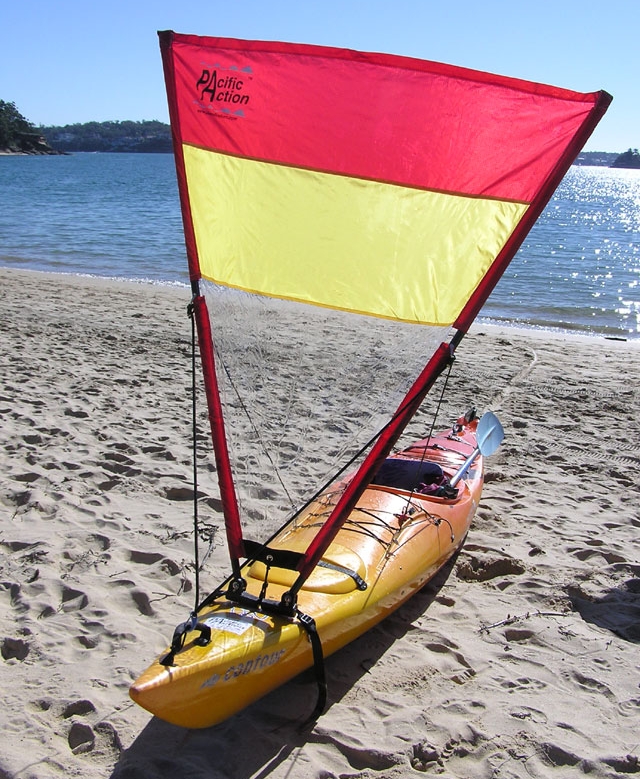Kayak Sailing
The use of sails on sea kayaks to assist with longer journeys has been common for decades. There are about as many different methods, types and variations of sea kayak sails and methods of sailing with sea kayaks, as there are different types and variations of sea kayaks. As well as on sea kayaks, sails can be fixed to fishing kayaks and less commonly, canoes.
Sailing enables kayakers to use some of the freely available energy of the wind, to save their own energy, increase speed and distance covered, and to add interest and excitement. They are often utilised on long journeys such as long crossings such as Bass Strait or big day journeys such as circumnavigation of French Island (below).
Most kayak sails today are make by small commercial operations, with some customising to suit the kayak and paddler preference. Two of the most popular designs are Flat Earth Sails (Code Zero and more recently Trade Winds sails) and the V-sail by Pacific Action.
Considerations when fixing a sail to your kayak or canoe:
- Size of sail - the amount of wind caught will affect stability, particularly in gusty conditions - bigger sails for bigger craft
- How is the sail rig attached to the deck - should the deck be reinforced?
- Is the greatest width of sail high or low - again this will affect stability
- Can it be easily set up/de-rigged and stowed in a range of conditions?
- Is there still adequate visibility past or through the sail when it is deployed
- Distance from the paddler to the sail - will it affect paddling performance when deployed or when stowed on the deck (length of mast and/or boom)?
- Can the sail be adjusted using one hand or two?
Is is always a good idea to practice the basics of sailing in lower wind conditions and learn how to readily deploy and stow the sail in a range of conditions and how to recover from a capsize.


